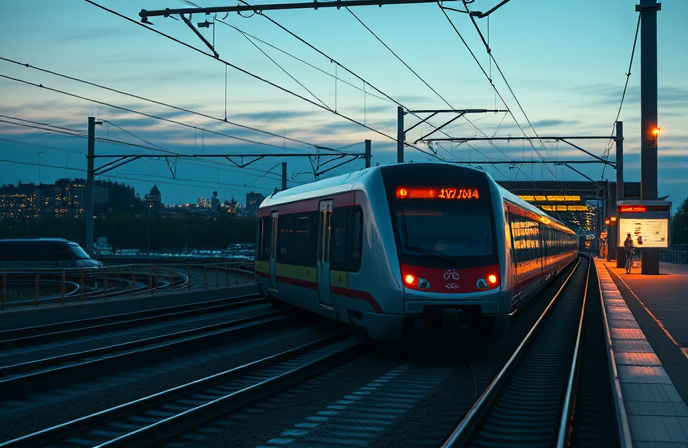Hyper-Tube Train Hits Major Milestone
The Korean Railroad Research Institute (KORAIL) announced on Wednesday that its hyper-tube train reached speeds over 621 mph (1,000 km/h) during a test. This marks a major milestone in the move towards faster trains.

The Korean Railroad Research Institute (KORAIL) announced on Wednesday that its hyper-tube train reached speeds over 621 mph (1,000 km/h) during a test. This marks a major milestone in the move towards faster trains.
The hyper-tube is South Korea’s version of the more-known hyperloop. The Asian country started its hyper-tube project back in 2017, and its recent news has been welcomed with open arms.
Once Korea’s hyper-tube train is up and running, one of its plans is to cut the journey from Seoul to Busan from three hours and thirty minutes down to just thirty minutes.
The Korea Railroad Research Institute (KRRI) announced on Nov. 11 that it has achieved a speed of at least 1,000 kilometers per hour in a 1/17 hyper-tube train aerodynamic test model.
The hyper-tube train is for use in a near-vacuum tube of 0.001 atm. It is an air resistance-minimized and unprecedented vehicle. No high-speed train has ever succeeded in overcoming the limit of 600 km/h so far. The velocity of 1,000 km/h is approximately equal to that of international flights.
The 1/17 test model developed by the research institute is the first of its kind worldwide. Similar foreign testers are incapable of reducing the atmospheric pressure to below 1 atm whereas the test model is capable of realizing 0.001 atm. The institute is planning to further refine its technology so that demonstration research for actual track and vehicle development can be initiated in 2022.
The hyper-tube train shares the same concept with Tesla CEO Elon Musk’s hyperloop, that is, overcoming friction and air resistance by running in a vacuum tube. The main difference is that the hyperloop is floated by air blown from below and the hyper-tube uses the magnetic repulsive force.





